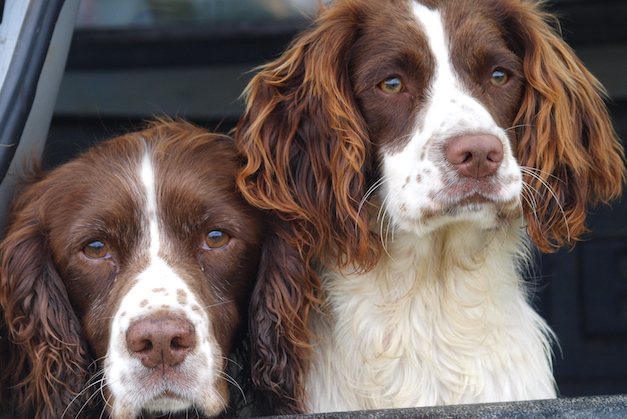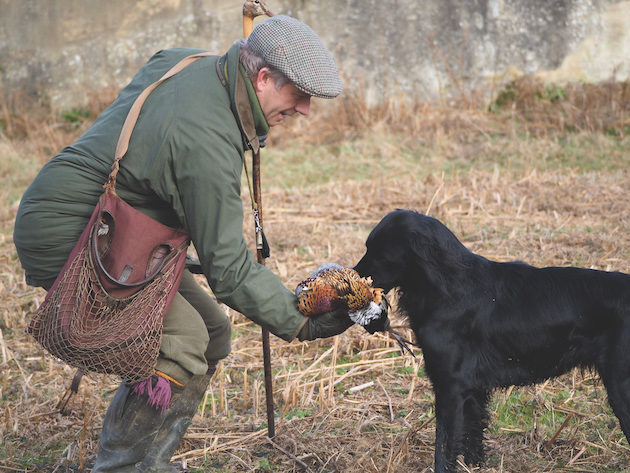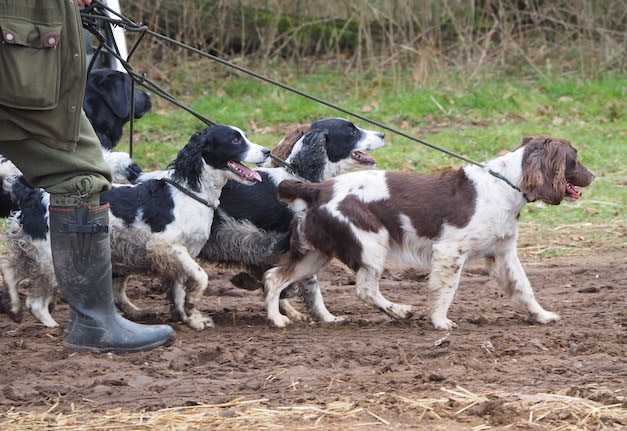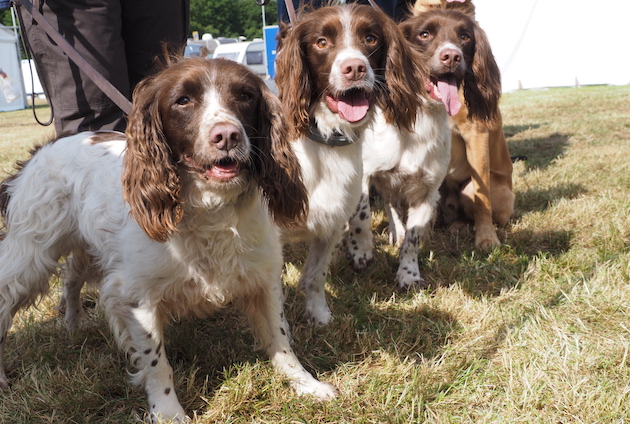Win CENS ProFlex DX5 earplugs worth £1,149 – enter here
Why is the springer spaniel becoming less popular?
 ESS
ESS
In the 1980s I belonged to a shooting syndicate with one simple rule: every member had to own a working gundog. It was a walk-one, stand-one shoot, so it was a practical ruling. There was no suggestion as to what sort of dog it had to be, but every member happened to own at least one English springer and I can recall shooting days when we had 15 or 16 springers out. At the time I thought little about it, because the English springer was then by far our most popular breed of shooting dog, at least for this type of shooting.
Little did I guess then that the springer had probably reached the peak of its popularity. Peter Moxon, gundog correspondent of Shooting Times for 40 years, believed that springers were the ideal rough shooter’s dog, as they are “natural hunters and retrievers, love working in cover and water and are easy to train”, as well as being hardy and healthy.

Flatcoats make superb retrievers but are rarely seen today
Springer spaniel less popular
Today the springer spaniel is less popular and I’ve heard suggestions that its fall in popularity might echo that of the flatcoat a century ago. At the start of the 20th century, the flatcoat was the dominant breed of retriever and was to be found, often in numbers, on every serious shoot. Thirty years later it had virtually disappeared. There are still a number of enthusiasts who work flatcoats today, but the dogs have become rarities. When did you last see one on a shoot?
There was a simple reason for the flatcoat’s sudden disappearance, for it was comprehensively eclipsed by a new breed that was easier to train and quicker to mature — the Labrador. The Lab’s rise from mere upstart to total dominance was remarkably quick and it’s doubtful whether anyone could have predicted it. Similarly, I don’t think anyone today is predicting that springers will become as rare as flatcoats, but there has to be a possibility that it might happen.
During the past couple of seasons I’ve been on shoots where there wasn’t a single springer to be seen. Yes, there were plenty of spaniels around, but they were all either cockers or sprockers, the increasingly popular cocker-springer cross.
Both cockers and sprockers have become fashionable; the first choices for many people. There’s a sound reason for this, as the working cocker has improved beyond all recognition in the past 40 years. In the early 1980s you would have been hard put to find a good cocker that could really work, while the classified pages in Shooting Times were crowded with advertisements for springers.

English springer spaniels were once a common sight on shoots but their numbers appear to be dwindling
Best of both
Today the working cocker is capable of doing almost everything that a springer can do. They are just as easy to train — many would claim easier — eat less, fit into a smaller house or kennel and come in a much wider range of colours. They are also physically appealing, combining good looks with sound temperaments. It’s hardly a surprise that they have become so popular. Sprockers have similar appeal, as a good one will combine the best of both breeds, though because they can’t be Kennel Club registered, they are barred from its competitions.
Of course, it’s not only the cocker and sprocker that the springer has to compete with in the popularity stakes. Modern HPRs are great rough shooting dogs too and a vizsla, or perhaps a German shorthaired pointer, makes a sound and tempting alternative to a springer. Not only will a well-trained HPR hunt with enthusiasm, it has the added advantage of pointing, a useful ability on a rough shoot where birds are few.
Field trials are generally regarded as an important way of improving a breed, with successful sires stamping their mark on their progeny and thus the breed in general. However, I’ve heard it argued that trials haven’t done the springer any favours.
Flashy white dogs have long been favoured in trials, but the traditional stamp of the old-fashioned springer has been lost, and with it its good looks. So the springer spaniel is less popular. Not everyone wants a snipey-faced white dog with one brown ear, even if it hunts like a demon.
If there is a resurgence in rough and walked-up shooting, the springer could come back into fashion
Family pet
Modern springers simply aren’t as handsome as they used to be. This hardly matters if you want a hard-hunting shooting dog that lives outdoors in a kennel, but the majority of working spaniels also double as family pets, so looks are important.
It’s also argued by some that modern trialling spaniels are too hot for the average shooting person to handle. We all want a dog that hunts well and retrieves competently, but we don’t need one that does these things at 100 miles per hour. The counter argument is that a trialling springer has been bred to be biddable, which may well be a fact, but it’s also true that it probably offers more performance and speed than the average rough shooter or beater will ever want, let alone need.
Curiously, as long as a spaniel’s registration papers declare it to be an English springer it can take part in a trial, even if it bears little resemblance to the breed standard. Judges at trials are only interested in how a dog performs, not what it looks like.
This is one of the main reasons why working springers no longer conform to the breed standard, though it’s true that most show springers don’t match the standard either, as they tend to be too big and too feathery.
Kennel Club registration figures are generally a good indication of a breed’s popularity. In 2010 the Kennel Club registered 13,988 English springer puppies, but last year that figure had dropped to 8,638. In contrast, cocker registrations over the same period have been remarkably consistent, with 23,744 in 2010 and 21,663 last year. Another potential springer rival, the Hungarian vizsla, has become more popular, with registrations rising from 1,498 in 2010 to 2,771 in 2019.
Like all statistics, these figures can be misleading, as they only refer to puppies that are Kennel Club registered. I’ve owned pure-bred springers for nearly 40 years but none of my dogs has been registered. Unregistered working springers are common, though you can generally assume that most show-bred dogs will have been registered.

English springer spaniels
However, working-type springers greatly outnumber the show variety, so it’s likely that the majority of registered springers are of working type, even if they are kept as pets.
I’ve never seen any estimates for the proportion of working-type cockers that are included in the total of cocker registrations. Show-bred cockers are very popular as pets, so it’s a difficult figure even to guess at. Neither do we know how many sprocker puppies are bred each year, but my estimate is that the number is closer to 10,000 than 5,000.
Figures can only tell us so much, but they do confirm what is already obvious: the English springer spaniel is less popular and in sharp decline, and it’s one that is set to continue unless something extraordinary takes place. That might have happened with the coronavirus outbreak. I’ve heard it said that the days of the very big shoots are over, and that there’s likely to be a greater interest in future in rough shooting, the springer’s speciality. Could that possibly lead to a resurgence in the breed?
My long-standing love affair with the springer started when my wife and I looked after a shooting friend’s old-fashioned working springer when he went on holiday. She was a friendly and affectionate bitch, and a great ambassador for her breed. When we acquired our first dog some years later there was no question as to which breed it would be; we didn’t consider anything other than an English springer.
That puppy proved to be the first in a long line of dogs, all related, that I have had since. Some were better workers than others but all — to my eye at least — were handsome dogs. The last of that line, Rowan, is now a sprightly 14-year-old. Her successor is a two-year-old sprocker so I have to admit, springer enthusiast that I am, to having abandoned the breed myself. But if you want a working spaniel do consider an English springer, though make sure you get a handsome dog of the right breeding. You are unlikely to be disappointed.
Related Articles
Get the latest news delivered direct to your door
Subscribe to Shooting Times & Country
Discover the ultimate companion for field sports enthusiasts with Shooting Times & Country Magazine, the UK’s leading weekly publication that has been at the forefront of shooting culture since 1882. Subscribers gain access to expert tips, comprehensive gear reviews, seasonal advice and a vibrant community of like-minded shooters.
Save on shop price when you subscribe with weekly issues featuring in-depth articles on gundog training, exclusive member offers and access to the digital back issue library. A Shooting Times & Country subscription is more than a magazine, don’t just read about the countryside; immerse yourself in its most authoritative and engaging publication.







